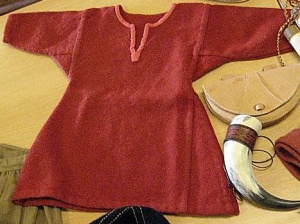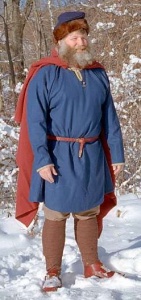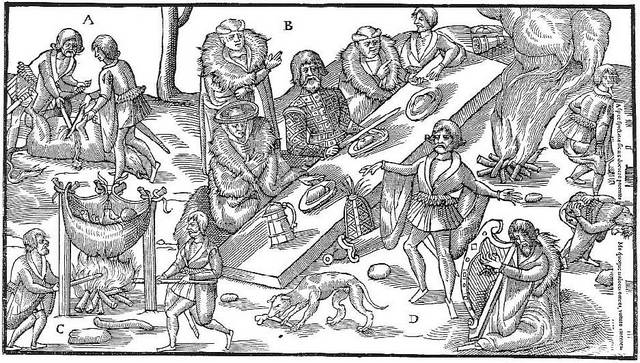Writing a novel set in the 11th century will necessarily involve describing the clothing of my various characters. I started out just describing a linen tunic covered by wool outerwear. And avoiding any description of pants, cloth weave or shoes.
Luckily, I found a great article titled “Clothes in the Viking Age” by William R. Short at www.hurstwic.org/history/articles/daily_living/text/clothing.htm
My minimal linen and wool description was adequate. But this article will enable me to expand my description.
The following (including images) are from William R. Short’s article:
Tunic:
Usually made of wool. Looks like a long pullover with excess material at the armpits for movement.
Undertunic:
Usually made of linen (for comfort). General shape of the Tunic.
Trousers:
Could be baggy or tight with no pockets or fly. So the men had to hike up their tunic and drop their drawers to relieve themselves.
Note: in “The Tudor Monastery Farm” (http://goo.gl/CWn3Tb), trousers may have had an opening (or flap) in the front that was laced up (thus making it easier to relieve oneself).
Trousers had no pockets. Hence one carried their odds and ends in pouches or just hanging from belts.
Socks:
Make of wool and probably only worn by the more wealthy.
Boots:
Made from leather using the turnshoe technique (made inside out to facilitate sewing the thinner uppers to the thicker sole. This puts the stitching on the inside of the shoe. Laces or toggles were used to secure the shoe.
Cloaks:
Rectangular in shape and worn so that the sword arm was free.
What does a well dressed northern European look like?
A lot more information is available in the article, including women’s clothing and some weaving techniques. Well worth a look. See www.hurstwic.org/history/articles/daily_living/text/clothing.htm
Update:February, 2015. For images of 16th Century dress, see http://goo.gl/QUv1fa



